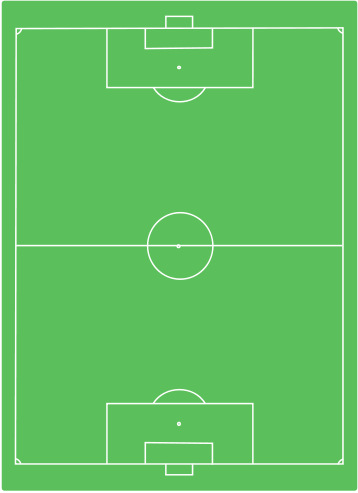IFK Göteborg
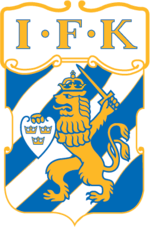 | |||
| Full name | Idrottsföreningen Kamraterna Göteborg | ||
|---|---|---|---|
| Nickname(s) |
Blåvitt (Blue-white) Änglarna (The Angels) Kamraterna (The Comrades) | ||
| Short name | IFK | ||
| Founded | 4 October 1904 | ||
| Ground | Gamla Ullevi, Gothenburg | ||
| Capacity | 18,416 | ||
| Chairman | Frank Andersson | ||
| Head coach | Jörgen Lennartsson | ||
| League | Allsvenskan | ||
| 2016 | Allsvenskan, 4th | ||
| Website | Club home page | ||
|
| |||
Idrottsföreningen Kamraterna Göteborg, commonly known as IFK Göteborg or simply Göteborg, is a Swedish professional football club based in Gothenburg. Founded on 4 October 1904, it is the only club in the Nordic countries that has won a pan-European competition, as the club won the UEFA Cup in 1982 and 1987. IFK is affiliated with Göteborgs Fotbollförbund and play all their home games at Gamla Ullevi since the start of the 2009 season. The club colours are blue and white, colours shared both with the sports society—Idrottsföreningen Kamraterna—which the club originated from, and with the home town of Gothenburg.
Besides the two UEFA Cup titles, they have won 18 Swedish championship titles, second most in Swedish football after Malmö FF, and have the third most national cup titles with seven. The team has qualified for four group stages of the UEFA Champions League, and reached the semi-finals of the 1985–86 European Cup. IFK Göteborg is the only Swedish club team in any sport to have won the Radiosportens Jerringpris—an award for best sports performance of the year voted by the Swedish people—for the 1982 UEFA Cup victory. IFK is one of the most popular football clubs in Sweden, with diverse country-wide support.
They currently play in the highest Swedish league, Allsvenskan, where they have played for the majority of their history. They have played top-flight football in Sweden continuously since 1977, which currently is the longest top-flight tenure of any club in Sweden—the second longest is Helsingborgs IF, since 1993. The club won its first Swedish championship in 1908, four years after the founding, and has won at least one championship title in all decades since, except the 1920s, 1970s and 2010s. IFK Göteborg's most successful period was from 1982 to 1996, when the team prospered in European football and won 10 out of 15 Swedish championships.
History
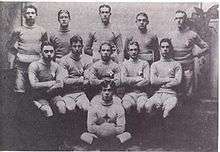
IFK Göteborg was founded at Café Olivedal, a cafeteria in the Annedal district in the centre parts of Gothenburg, on October 4, 1904.[1] It was the third, but only lasting, IFK association in Gothenburg, becoming the 39th overall.[2] A committee for football was created at the historic first meeting; the association's first football match ended in a 4–1 victory against a club from the local area, IK Viking.[3] The foundation of IFK Göteborg was important for the development of football in the city, as until that point, Örgryte IS, the largest of Gothenburg clubs, were dominant. IFK Göteborg represented some needed competition.[4]
IFK Göteborg became the first Swedish team in four years to beat Örgryte IS in 1907.[5] They then went on to win their first Swedish Championship in 1908 by winning the cup tournament Svenska Mästerskapet, and three players from the club were selected to play for Sweden in the national team's first match.[5] That year IFK played teams from outside Sweden for the first time, meeting the Danish clubs Østerbro BK and Boldklubben af 1893.[5]
In 1910, the team played in blue and white striped jerseys for the first time.[6] Two years later the team drew 1–1 in a game against the 1912 Swedish Olympic team, and the newspapers in Stockholm nominated IFK Göteborg as "the best Swedish football club ever".[7] IFK Göteborg won Svenska Serien—the highest Swedish league at the time, but not the Swedish Championship deciding competition—for the fifth time in a row in 1917. The early IFK Göteborg team had no trainer; the club gained its first such official in 1921, when Hungarian manager Sándor Bródy was hired.[8] Bródy was appointed manager for IFK two years later. The first Swedish official national league, Allsvenskan, started in late 1924, the year the legendary Filip Johansson made his debut for IFK Göteborg.[9] The club finished second, but Johansson scored 39 goals in 22 games and was the league's top goalscorer.[10]

IFK won their first Allsvenskan title in 1934–35, the ten previous seasons of the league saw the club finish in the top four.[11] Swedish football was dominated by teams from Gothenburg during these years,[12] but IFK Göteborg were surprisingly relegated in 1937–38,[13] although the team was promoted back to Allsvenskan the next season. Back in the highest division, IFK finished second, with the league continuing despite the outbreak of World War II. IFK won another title in 1941–42 with a strong team,[13] but the rest of the decade saw mixed results. The 1940s team included the talented Gunnar Gren, who became the top scorer in 1946–47. He was also awarded Guldbollen as the best player in Sweden, and won an Olympic gold medal with the Swedish team at the 1948 Olympics.[14] When Gren left in 1949, IFK were relegated from Allsvenskan the following season. As happened the last time IFK played in a lower league, they were promoted directly back to Allsvenskan after one season in Division 2. IFK went on to compete in a European Cup—the European Champion Clubs' Cup—for the first time in 1958, but were eliminated in the second round by SC Wismut. In 1959, the all-time Allsvenskan record attendance of 52,194 was set when IFK played Örgryte IS at Nya Ullevi.[15]
After an unglamorous decade, IFK were led by manager and retired footballer Bertil Johansson to a surprising championship title in 1969.[13] The following season was one of the darkest in their history.[13][16] IFK were relegated, and unlike previous relegations they did not make an immediate return. After three seasons in the second league IFK had lost all signs of being a team from Allsvenskan,[17] and had still not managed to gain promotion. But after hard work from board member Anders Bernmar and others to get the club on the right track, IFK were promoted to Allsvenskan in 1976.[17] In 1979, IFK hired Sven-Göran Eriksson as manager.[18] He introduced the 4–4–2 system with "pressure and support"—called the Swenglish model[19]—which would give IFK great success later on, and his first season at the club ended with a second place in Allsvenskan and the club's first gold medal in Svenska Cupen.
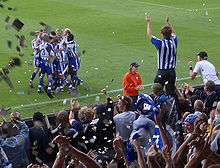
After reinforcing the team with several expensive players[20]—including Thomas Wernerson and Stig Fredriksson—IFK had finished second in the league and reached the quarter-finals in the UEFA Cup as 1981 came to an end. 1982 then became a turbulent season as the whole board was replaced and the club almost went bankrupt—even needing to borrow money from the official supporter's association to travel to Valencia to play the quarter-final of the UEFA Cup.[21] After the troubled start IFK won every competition they entered, including Allsvenskan, the Allsvenskan play-off, Svenska Cupen, and the UEFA Cup, defeating Hamburger SV 4–0 on aggregate in the finals.[22] During the following 15 years the club was the leading club in Swedish football,[23] winning the Swedish championship ten times, the domestic cup three times and the UEFA Cup twice.
IFK managed to field a strong team for a couple of years and won gold in the league in both 1983 and 1984, and the cup in 1983. In 1986, the team reached the semi-finals of the European Cup but were defeated on penalties against FC Barcelona.[24] A new team of talents won both the UEFA Cup and Allsvenskan once again in 1987,[22] after beating Dundee United in the UEFA Cup final. The youth manager Roger Gustafsson took over the team from Gunder Bengtsson in 1990, and his time with IFK was to become very successful, winning Allsvenskan five times between 1990 and 1995.[25]
As IFK won the 1993 Allsvenskan, they qualified for European competition. IFK advanced to the group stage of the Champions League, where they faced FC Barcelona, Manchester United and Galatasaray. Elimination at the group stage was widely anticipated,[26][27] but IFK Göteborg confounded expectations by winning the group and advancing to the knockout stage. However, IFK Göteborg was eliminated in the quarter-finals by Bayern Munich on away goals.
The last years before the new millennium were disappointing for IFK, providing a stark contrast to the earlier success.[28] The team only managed a silver in 1997 and an eighth place in 1998, after buying several expensive players who failed to produce.[28][29] IFK changed manager in the middle of a season two years in a row—in 1998 and 1999—when the club never before had changed manager even once during an ongoing season.[28] The last year of the decade ended with a sixth-place finish. The new millennium offered varied results, with the club playing a relegation play-off in 2002, but challenging for the championship in 2001, 2004, and 2005. In 2007, the first title in eleven years was secured in the last round of Allsvenskan. The club then won the national cup Svenska Cupen the next season. IFK Göteborg are still considered to be one of the "Big Three" in Swedish football, along with Malmö FF and AIK, despite only having won three titles in the last ten years.[24][30][31][1]
Colours, crest and sponsorship
Colours and kit
The traditional colours of all IFK associations are blue and white, and IFK Göteborg is no exception. Soon after the club's foundation in 1904, it was decided that the kit should consist of a blue and white striped shirt with blue shorts. But the design was too costly and instead a cheaper alternative was used. Thus the club's first kit used a blue shirt with a single horizontal white stripe and a four-pointed star, one of the IFK association symbols, in white on the chest.[3][32] During the next few years, white or blue shirts without stripes were used. In 1910, a kit comprising a blue and white vertically striped shirt and blue shorts was used for the first time[6] inspired by the kit of Kjøbenhavns Boldklub.[33] This kit has remained as the home colours ever since. The few visible sponsor logos, together with the longtime use of blue and white stripes, has made the kit a classic in Swedish football.[34] The traditional away kit is red and white, in different styles, though other colour combinations, for example orange and white, have been used, mainly in the 1990s and 2000s. The away kit introduced in 2005 once again used red and white. An almost completely white third kit with blue details was introduced in mid-2007 after requests from supporters.[35] In the 2010s, the away kit colours have seen much variation, including a pink shirt with black shorts, a black kit with light grey details, the more traditional red kit with white details, and a purple kit with white details introduced in 2016.
|
Home kit used for the 1904–05 seasons. |
Home kit used for the 1906 season. |
Home kit used for the 1907–09 seasons. |
Home kit used since the 1910 season with only minor variations. |
Crest
The crest of IFK Göteborg has its origins in the coat of arms of the city of Gothenburg which in turn is based on several other heraldic arms. The lion on a field of silver and blue is the heraldic arms of the House of Folkung, and the lion holds the Three Crowns of Sweden, both symbols being used in the coat of arms of Sweden. This arms was granted to Gothenburg by Gustavus Adolphus.[36] The coat of arms of the city sees the lion facing the sinister (heraldic left, which is viewer's right) side which often is interpreted as a fleeing lion, the normal being a lion facing the dexter (heraldic right) side, and IFK chose to use the latter on the club crest. Finally the three letters IFK were added on top. This crest has been used since it first appeared on the kit in 1919.[37] These main elements have not been modified since then, but during the years several different designs of the crest have been used, occasionally having the lion facing the sinister side. In the early 1980s, the club standardised the design and only minor changes—such as element colours and different hues—have been made since then, with the exception of the years 1997–1999 when IFK, with Reebok as kit sponsors, used a crest with some more distinct changes to the standard elements.[38] Before 1919 various other symbols were used, with the four-pointed star of the IFK associations featuring on the shirts until 1910.[38]

Crest first used in 1919. 
One of many alternative crests used before 1981. 
Crest used 1981–96. 
Crest used 1997–99. 
Crest used since 2000.
Sponsorship
Adidas have supplied the kit for a majority of the seasons since the 1970s, interrupted briefly in 1979–80 and for seven seasons during the 1990s.[39] In 2016, Kappa was presented as the new kit manufacturer of the club.[40]
The logotype of the main sponsor ICA—a grocery store chain—figured on the shirt front from 1980[41] until 2011[42] and almost become part of the shirt.[43][44] The logotype was reproduced in its original red colour on the shirt for the first few years, but was soon changed to a blue and white version to better blend with the kit colours.[43] ICA had sponsored IFK since 1974, but in 2011, after 35 years of sponsorship, they were replaced as the main sponsor by Prioritet Finans, a financial corporation.[45] This sponsorship was terminated after the 2014 season, leading IFK the club to play without a shirt sponsor for half a season, until Prioritet Finans returned during the summer of 2015.[45]
| Period | Kit manufacturer | Shirt sponsor |
|---|---|---|
| 1977–78 | Adidas | None |
| 1979 | Admiral | |
| 1980 | ICA | |
| 1981–92 | Adidas | |
| 1993–96 | ASICS | |
| 1997–99 | Reebok | |
| 2000–10 | Adidas | |
| 2011–14 | Prioritet Finans | |
| 2015 | None[upper-alpha 1] | |
| 2015 | Prioritet Finans | |
| 2016– | Kappa |
Stadiums
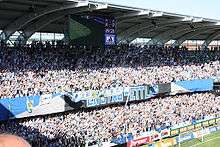
Historically, IFK Göteborg's main home stadium has been Gamla Ullevi, where the majority of the competitive games have been played. The club has played there in two separate periods, most recently after leaving Ullevi (Nya Ullevi) in 1992, although matches attracting large crowds—such as derbies against the rivals Örgryte IS and GAIS, or international games—were still played at the larger Ullevi stadium. Gamla Ullevi's capacity was 18,000 when used in the 1990s and 2000s, while Nya Ullevi has a capacity of 43,200.[46][47]
Gamla Ullevi was demolished on 9 January 2007 to make place for a new stadium with the same name, Gamla Ullevi, with a capacity of 18,800. The new stadium was completed in late 2008, but not opened until the start of the 2009 season. During construction, IFK Göteborg played the 2007 and 2008 seasons at Nya Ullevi.[48]
On 11 April 2009 IFK Göteborg played their first game on the new Gamla Ullevi stadium and won against Djurgården with 6–0 in front of 18,276 spectators.[49]
IFK Göteborg have used three other stadia as official home grounds. The first ground was Idrottsplatsen, in use from 1905 to 1916. It was built in 1896 for the cycling club Göteborgs Velocipedklubb, and was originally used for track cycling. During the 1909 season IFK Göteborg also used Örgryte IS' home ground of the time, Balders Hage, due to a conflict with the owners of Idrottsplatsen.[50] The third official stadium was Walhalla Idrottsplats, used for a number of home matches at the same time as Idrottsplatsen. A fourth ground, Slottsskogsvallen, has never been the official home ground, but has nonetheless been used a number of times for IFK Göteborg home matches.[51]
Idrottsplatsen fell into decline due to poor leadership and a troubled economy in the 1910s,[52] and a decision was made to completely renovate the arena with the help of outside sponsorship and funding. The construction of the new football ground was started in 1915 and used the site of Idrottsplatsen as foundation. The new stadium, originally named Ullervi,[53] but later changed to Ullevi and finally Gamla Ullevi, was opened in 1916. It was the home ground of IFK Göteborg until 1958, when Nya Ullevi—built for the 1958 World Cup held in Sweden—was opened. Due to a number of seasons with low attendance in Swedish football in the late 1980s and early 1990s, a move back to Gamla Ullevi was made in 1992.[54]
Supporters
Before the foundation of IFK Göteborg, the dominant club in the Gothenburg area was Örgryte IS, which was considered a middle class club, and in later years an upper class club, like most clubs of that time. IFK became popular amongst the working class, creating a fierce rivalry based upon both local pride and social class. In the early 20th century, supporters were supposed to act as gentlemen, applauding and supporting both their own team, and the opponents. However, this proved a hard task for supporters of the Gothenburg teams. Local patriotism and class differences sometimes resulted in fights and pitch invasions, making the Swedish press view IFK and Örgryte fans as the scum of Swedish football.[55]
After World War I, the rivalry calmed, and Gothenburg supporters became known as friendly and sportsmanlike fans. However, this only applied to the behaviour on home ground, as IFK supporters continued to behave badly when travelling to away matches by train (called göteborgstågen, the Gothenburg trains), a phenomenon that grew quickly in the 1920s. This behaviour peaked in 1939, just after the outbreak of World War II, when approximately 1,900 IFK fans travelled to Borås to see IFK play Elfsborg. After a 2–3 loss, the fans fought with the Borås police, before returning home to Gothenburg and disturbing a wartime blackout exercise.[55]

As in most other parts of the world, the decades following the World War II were relatively free from football violence and the supporter culture did not change much. Swedish football culture started to change in the late 1960s, becoming heavily inspired and influenced by the English supporter culture. This flourished in the 1970s and 1980s, giving birth to some of the most well-known Swedish supporters clubs, AIK's Black Army, Djurgårdens IF's Blue Saints (later Järnkaminerna), and IFK Göteborg's supporters club, Änglarna (the Angels). The first attempt to found an IFK supporters club was made in 1969, but interest diminished when IFK Göteborg were relegated from the highest league the following year. The supporters club was not re-founded until 1973, which is considered the year of foundation of Änglarna.[56]
As the club gained success in European club tournaments in the 1980s and 1990s, and thousands of IFK fans travelled to Hamburg, Barcelona, Dundee, Milan, Manchester and Munich, the supporters gained influence on the club, for example by lending money to the almost bankrupt IFK Göteborg so the team could go to Valencia to play the quarter-final in the UEFA Cup in 1982, or by being the main force behind the move back to Gamla Ullevi in 1992.[21][57] The early 1990s saw a downward trend in attendance numbers, even though the club was successful on the pitch, but the trend turned in the later years of the decade and the first few years of the new millennium brought the club's highest average attendance since the early 1980s.[58]
In the 2000s, supporter culture in Sweden started to shift from being English-influenced to being more influenced by the Southern European countries and their football culture, making tifos and ultras a common sight in Swedish arenas. From acting as an almost uniform group of fans gathered under the same flag, the supporter club Änglarna, IFK fans created separate supporter factions, including Ultra Bulldogs, Young Lions and West Coast Angelz. IFK is the most popular football club in Sweden;[24] a 2004 survey concluded that IFK Göteborg had support from 13% of Swedish football fans.[59] A majority, 55%, of football fans in Gothenburg support IFK, and the club is the fourth most popular in Stockholm (after AIK, Djurgårdens IF and Hammarby IF) and the second most popular in Malmö, after Malmö FF.[59]
Relationships with other clubs
IFK Göteborg is part of Göteborgsalliansen, an alliance including the three top teams from Gothenburg, including GAIS and Örgryte IS. Besides arranging tournaments, they together hosted big games in which the best players from each club represented the side. In 2015, IFK announced partnership with Utsiktens BK, an agreement involving IFK's players to be loaned out to the club for first team experience.[60] The supporter group Ultras Göteborg have a supporter friendship with Ultras Nürnberg, which is a fraction to the German football club 1. FC Nürnberg.
Players
First-team squad
- As of 11 August 2016[61]
Note: Flags indicate national team as defined under FIFA eligibility rules. Players may hold more than one non-FIFA nationality.
|
|
Current youth players with first-team experience
- As of 6 November 2016[upper-alpha 2]
Note: Flags indicate national team as defined under FIFA eligibility rules. Players may hold more than one non-FIFA nationality.
|
|
Out on loan
- As of 11 August 2016[61]
Note: Flags indicate national team as defined under FIFA eligibility rules. Players may hold more than one non-FIFA nationality.
|
Notable players
| The all-star team chosen by Göteborgs-Posten readers in 2004. |
List criteria:
- player has been chosen for the greatest ever IFK Göteborg team in a 2004 poll by readers of the regional newspaper Göteborgs-Posten,[63] or
- player has been chosen for the dream team presented in the club's official 100 year jubilee book published in 2004,[64] or
- player has gained more than 100 caps for the Sweden national team.
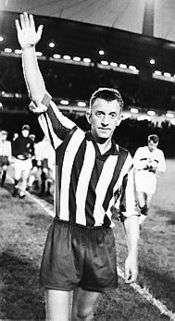
| Name | Nationality | Position | IFK Göteborg career[65] |
League record[66] | Honours[67] | |
|---|---|---|---|---|---|---|
| Apps | Goals | |||||
| Börjesson, ErikErik Börjesson | Sweden | FW | 1907–1910 1912–1920 |
64 | 81 | 3 Swedish Championships |
| Johansson, FilipFilip Johansson | Sweden | FW | 1924–1933 | 181 | 180 | |
| Arne Nyberg | Sweden | FW | 1932–1950 | 297 | 130 | 2 Swedish Championships |
| Gunnar Gren | Sweden | FW | 1940–1949 | 164 | 78 | 1 Swedish Championship |
| Bengt Berndtsson | Sweden | FW | 1950–1967 | 348 | 69 | 1 Swedish Championship |
| Bertil Johansson | Sweden | FW | 1954–1968 | 268 | 162 | 1 Swedish Championship |
| Donald Niklasson | Sweden | DF | 1967–1978 | 189 | 12 | 1 Swedish Championship |
| Torbjörn Nilsson | Sweden | FW | 1975–1976 1977–1982 1984–1986 |
212 | 127 | 1 UEFA Cup, 2 Swedish Championships, 2 Svenska Cupen |
| Tommy Holmgren | Sweden | MF/FW | 1977–1989 | 242 | 20 | 2 UEFA Cups, 4 Swedish Championships, 3 Svenska Cupen |
| Glenn Hysén | Sweden | DF | 1978–1983 1985–1987 |
155 | 13 | 2 UEFA Cups, 3 Swedish Championships, 3 Svenska Cupen |
| Ruben Svensson | Sweden | DF | 1978–1986 | 195 | 23 | 1 UEFA Cup, 3 Swedish Championships, 3 Svenska Cupen |
| Glenn Strömberg | Sweden | MF | 1979–1982 | 97 | 9 | 1 UEFA Cup, 1 Swedish Championship, 2 Svenska Cupen |
| Stig Fredriksson | Sweden | DF | 1980–1988 | 179 | 16 | 2 UEFA Cups, 4 Swedish Championships, 2 Svenska Cupen |
| Roland Nilsson | Sweden | DF | 1983–1989 | 124 | 7 | 1 UEFA Cup, 2 Swedish Championships, 1 Svenska Cupen |
| Håkan Mild | Sweden | MF | 1988–1993 1995–1996 1998–2001 2002–2005 |
252 | 26 | 4 Swedish Championships, 1 Svenska Cupen |
| Thomas Ravelli | Sweden | GK | 1989–1997 | 211 | 0 | 6 Swedish Championships, 1 Svenska Cupen |
| Magnus Erlingmark | Sweden | DF/MF/FW | 1993–2004 | 278 | 43 | 4 Swedish Championships |
| Niclas Alexandersson | Sweden | MF | 1996–1997 2004–2008 2009 |
176 | 32 | 2 Swedish Championships, 1 Svenska Cupen |
Management
Organisation
|
Technical staff
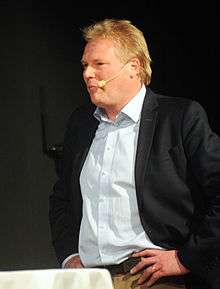
- As of 12 April 2016[70]
|
Notable managers
The following 15 managers either have won at least one major honour with IFK Göteborg or have managed the team for 100 or more league matches. The managers are listed according to when they were first appointed manager for IFK Göteborg.

| Name | IFK Göteborg career | League matches | Swedish Championship | Svenska Cupen | UEFA Cup |
|---|---|---|---|---|---|
| |
1924–1929 1931–1932 1943 |
183 | |||
| |
1930 1933–1938 |
137 | 1934–35 | ||
| |
1941–1942 | 43 | 1941–42 | ||
| |
1943–1948 | 110 | |||
| |
1954–1958 | 99 | 1957–58 | ||
| |
1967–1970 | 88 | 1969 | ||
| |
1979–1982 | 87 | 1978–79 1981–82 |
1981–82 | |
| |
1982 1985–1987 |
79 | 1982 1987 |
1986–87 | |
| |
1983–1984 | 44 | 1983 1984 |
1982–83 | |
| |
1990–1995 2002 |
165 | 1990 1991 1993 1994 1995 |
1991 | |
| |
1996–1998 | 60 | 1996 | ||
| |
2007–2010 | 100 | 2007 | 2008 | |
| |
2012–2014 | 90 | 2012–13 | ||
| |
2015–present | 42 | 2014–15 |
Honours
Domestic
- Swedish Champions[upper-alpha 3]
- Winners (18): 1908, 1910, 1918, 1934–35, 1941–42, 1957–58, 1969, 1982, 1983, 1984, 1987, 1990, 1991, 1993, 1994, 1995, 1996, 2007
League
- Allsvenskan:
- Winners (13): 1934–35, 1941–42, 1957–58, 1969, 1982, 1984, 1990, 1991, 1993, 1994, 1995, 1996, 2007
- Runners-up (13): 1924–25, 1926–27, 1929–30, 1939–49, 1979, 1981, 1986, 1988, 1997, 2005, 2009, 2014, 2015
- Svenska Serien:
- Winners (5): 1912–13, 1913–14, 1914–15, 1915–16, 1916–17
- Fyrkantserien:
- Winners (2): 1918, 1919
- Mästerskapsserien:
- Winners (1): 1991
- Division 2
- Winners (3): 1938–39, 1950–51, 1976
- Runners-up (2): 1972, 1975
Cups
- Svenska Cupen:
- Winners (7): 1978–79, 1981–82, 1982–83, 1991, 2008, 2012–13, 2014–15
- Runners-up (5): 1985–86, 1998–99, 2004, 2007, 2009
- Allsvenskan play-offs:
- Winners (5): 1982, 1983, 1984, 1987, 1990
- Runners-up (1): 1985
- Svenska Mästerskapet:
- Winners (3): 1908, 1910, 1918
- Svenska Supercupen:
- Winners (1): 2008
- Runners-up (4): 2009, 2010, 2013, 2015
- Kamratmästerskapen:
- Winners (11): 1909, 1910, 1912, 1913, 1914, 1915, 1920, 1921, 1922, 1924, 1940
- Runners-up (2): 1906, 1908
European
- UEFA Cup:
- European Cup/UEFA Champions League:
- UEFA Cup Winners' Cup:
- Quarter-finals (1): 1979–80
- Royal League:
- Runners-up (1): 2004–05
Doubles, trebles and quadruples
Doubles
- Fyrkantserien and Svenska Mästerskapet (Swedish Champions):
- Winners (1): 1918
- Allsvenskan play-offs (Swedish Champions) and Svenska Cupen:
- Winners (1): 1983
- Allsvenskan and Allsvenskan play-offs (Swedish Champions):
- Winners (2): 1984, 1990
- Svenska Cupen and Svenska Supercupen:
- Winners (1): 2008
Trebles
- Allsvenskan, Allsvenskan play-offs (Swedish Champions) and the UEFA Cup:
- Winners (1): 1987
- Allsvenskan, Mästerskapsserien (Swedish Champions) and Svenska Cupen:
- Winners (1): 1991
Quadruples
- Allsvenskan, Allsvenskan play-offs (Swedish Champions), Svenska Cupen and the UEFA Cup:
- Winners (1): 1982
Records
- Home victory, Allsvenskan: 9–1 vs. IK Sleipner, 10 May 1925; 8–0 vs. Hammarby IF, 2 June 1925; 8–0 vs. Stattena IF, 21 April 1930
- Away victory, Allsvenskan: 9–2 vs. IFK Eskilstuna, 8 October 1933; 7–0 vs. IK Sleipner, 20 April 1941
- Home loss, Allsvenskan: 2–9 vs. Malmö FF, 10 September 1949
- Away loss, Allsvenskan: 0–7 vs. IFK Norrköping, 1 May 1960
- Highest attendance, Nya Ullevi: 52,194 vs. Örgryte IS, 3 June 1959
- Highest attendance, Gamla Ullevi: 31,064 vs. GAIS, 27 May 1955
- Highest attendance, Slottsskogsvallen: 21,580 vs. AIK, 25 October 1931
- Highest average attendance, season: 23,796, 1977
- Most appearances, total: 609,
 Mikael Nilsson 1987–01
Mikael Nilsson 1987–01 - Most appearances, Allsvenskan: 348,
 Bengt 'Fölet' Berndtsson 1951–67
Bengt 'Fölet' Berndtsson 1951–67 - Most goals scored, total: 333,
 Filip 'Svarte-Filip' Johansson 1924–34
Filip 'Svarte-Filip' Johansson 1924–34 - Most goals scored, Allsvenskan: 180,
 Filip 'Svarte-Filip' Johansson 1924–34
Filip 'Svarte-Filip' Johansson 1924–34 - Most goals scored, season, Allsvenskan: 39,
 Filip 'Svarte-Filip' Johansson 1924–25
Filip 'Svarte-Filip' Johansson 1924–25
Footnotes
- ↑ First half of the season.
- ↑ Current youth players who at least have sat on the bench in a competitive match.
- ↑ The title of "Swedish Champions" has been awarded to the winner of four different competitions over the years. Between 1896 and 1925 the title was awarded to the winner of Svenska Mästerskapet, a stand-alone cup tournament. No club were given the title between 1926 and 1930 even though the first-tier league Allsvenskan was played. In 1931 the title was reinstated and awarded to the winner of Allsvenskan. Between 1982 and 1990 a play-off in cup format was held at the end of the league season to decide the champions. After the play-off format in 1991 and 1992 the title was decided by the winner of Mästerskapsserien, an additional league after the end of Allsvenskan. Since the 1993 season the title has once again been awarded to the winner of Allsvenskan.[71]
References
All sources in (Swedish) unless otherwise noted.
- General reference books
- Alsiö, Martin; Frantz, Alf; Lindahl, Jimmy; Persson, Gunnar, eds. (2004). 100 år: Svenska fotbollförbundets jubileumsbok 1904–2004, del 2. Vällingby: Stroemberg Media Group. ISBN 91-86184-59-8.
- Alsiö, Martin (2011). Persson, Gunnar, ed. 100 år med allsvensk fotboll. Västerås: Idrottsförlaget/Canal+. ISBN 978-91-977326-7-3.
- Andersson, Torbjörn (2002). Kung fotboll: den svenska fotbollens kulturhistoria från 1800-talets slut till 1950. Eslöv: Symposion. ISBN 91-7139-565-2.
- Andersson, Torbjörn (2011). "Spela fotboll bondjävlar!": en studie i svensk klubbkultur och lokal identitet från 1950 till 2000-talets början, del 1. Stockholm: Symposion. ISBN 978-91-7139-868-0.
- Glanell, Tomas, ed. (1984). 80 år med svensk fotboll: jubileumsboken. Stockholm: Strömbergs. ISBN 91-86184-23-7.
- Glanell, Tomas; Havik, Göran; Lindberg, Thomas; Persson, Gunnar; Ågren, Bengt, eds. (2004). 100 år: Svenska fotbollförbundets jubileumsbok 1904–2004, del 1. Vällingby: Stroemberg Media Group. ISBN 91-86184-59-8.
- Nylin, Lars (2004). Den nödvändiga boken om Allsvenskan: svensk fotboll från 1896 till idag, statistik, höjdpunkter lag för lag, klassiska bilder. Sundbyberg: Semic. ISBN 91-552-3168-3.
- Persson, Gunnar; Glanell, Thomas; Lundgren, Lars; Stark, Janne; Strömberg, Robert, eds. (1988). Allsvenskan genom tiderna. Stockholm: Strömbergs idrottsböcker. ISBN 91-86184-35-0.
- IFK Göteborg books
- Andreasson, Kenth; Palmström, Uno (1976). Kamraterna: en bok om IFK Göteborg. Stockholm: Askild & Kärnekull. ISBN 91-7008-652-4.
- Andreasson, Kenth; Palmström, Uno (1988). Blåvitt: historien om ett mästarlag. Stockholm: Prisma. ISBN 91-518-2232-6.
- Bernmar, Anders; Skånberg, Alf; Öberg, Ralf, eds. (1979). Blåvitt 75 år. Göteborg: IFK Göteborg.
- Elisson, Johan; Kjäll, Andreas; Pettersson, John (2014). Henriksson, Mathias, ed. Vi som är från Göteborg åker aldrig hem med sorg. Göteborg: Supporterklubben Änglarna. ISBN 978-91-637-5138-7.
- Göransson, Mattias (2005). Blåvit gryning. Göteborg: Offside Press. ISBN 91-85279-03-X.
- Jacobsson, Ingvar; Larsson, Göran (1977). Vi älskar dom. Bjästa: CeWe.
- Jönsson, Ingemar; Josephson, Åke, eds. (2004). IFK Göteborg 1904–2004: en hundraårig blåvit historia genom elva epoker. Göteborg: IFK Göteborg. ISBN 91-631-4659-2.
- Thylin, Stefan (1996). Änglarna: ett europeiskt fenomen. Stockholm: Fischer & Co. ISBN 91-7054-821-8.
- Thylin, Stefan (2009). Guldåren. Västerås: Sportförlaget. ISBN 978-91-85319-58-9.
- Specific references
- 1 2 Nylin 2004, p. 47.
- ↑ Jönsson & Josephson 2004, p. 9.
- 1 2 Jönsson & Josephson 2004, p. 10.
- ↑ Jönsson & Josephson 2004, pp. 11–13.
- 1 2 3 Jönsson & Josephson 2004, p. 13.
- 1 2 Jönsson & Josephson 2004, p. 19.
- ↑ Jönsson & Josephson 2004, p. 20.
- ↑ Jönsson & Josephson 2004, p. 25.
- ↑ Glanell et al. 2004, p. 108.
- ↑ Nylin 2004, p. 48.
- ↑ Persson et al. 1988, p. 78.
- ↑ Glanell et al. 2004, pp. 98–101.
- 1 2 3 4 Nylin 2004, p. 49.
- ↑ Jönsson & Josephson 2004, p. 55.
- ↑ "Högsta och lägsta publiksiffror i Allsvenskan" (PDF) (in Swedish). Sveriges Fotbollshistoriker och Statistiker. 2004. Retrieved 20 June 2007.
- ↑ Jönsson & Josephson 2004, p. 88.
- 1 2 Jönsson & Josephson 2004, p. 99.
- ↑ "Sven-Göran Eriksson". The Football Association. 2006. Retrieved 20 June 2007.
- ↑ "Bakgrundsfakta till Token från Torsby" (in Swedish). Offside. 2006. Archived from the original on 28 September 2007. Retrieved 13 July 2007.
- ↑ Jönsson & Josephson 2004, p. 109.
- 1 2 Jönsson & Josephson 2004, pp. 110–111.
- 1 2 Jönsson, Ingemar (2003). "IFK Göteborg: 1977–89" (in Swedish). IFK Göteborg. Retrieved 13 July 2007.
- ↑ Nylin 2004, p. 50.
- 1 2 3 Cresswell, Peterjon (2003). "Magazine: Gothenburg". UEFA. Archived from the original on 23 June 2007. Retrieved 20 June 2007.
- ↑ Jönsson & Josephson 2004, p. 321.
- ↑ M.H. (1999). "Nittiotalet är över – men minnena består" (in Swedish). Alltid Blåvitt. Archived from the original on 27 September 2007. Retrieved 20 June 2007.
- ↑ Guslen, Bertil (31 December 1994). "Blåvitt 1994 var mästarlaget som fick Europa att se rött". Göteborgs-Posten.
- 1 2 3 Jönsson, Ingemar (2003). "IFK Göteborg: 1996-00" (in Swedish). IFK Göteborg. Retrieved 20 June 2007.
- ↑ Jönsson & Josephson 2004, p. 153.
- ↑ Nylin 2004, p. 10.
- ↑ Nylin 2004, p. 27.
- ↑ Jönsson & Josephson 2004, p. 229.
- ↑ Persson et al. 1988, p. 76.
- ↑ "Världsklass, Djurgården" (in Swedish). Aftonbladet. 28 March 2013. Retrieved 30 March 2013.
- ↑ Ericson, Tomas (11 June 2007). "Blåvitt spelar i helvitt imorgon" (in Swedish). Alltid Blåvitt. Retrieved 20 June 2007.
- ↑ "Stadsvapnets historia" (in Swedish). Göteborgs Stad. 4 May 2007. Archived from the original on 6 July 2007. Retrieved 13 July 2007. web archive link
- ↑ Jönsson & Josephson 2004, p. 241.
- 1 2 "Atletiska män och flyende lejon" (in Swedish). IFK Göteborg. 27 February 2013. Retrieved 30 March 2013.
- ↑ "IFK och Adidas tecknarfyraårsavtal" (in Swedish). IFK Göteborg. 11 May 2011. Retrieved 12 April 2016.
- ↑ "Kappa ny materialleverantör åt Blåvitt" (in Swedish). IFK Göteborg. 3 December 2015. Retrieved 12 April 2016.
- ↑ Jönsson & Josephson 2004, p. 177.
- ↑ "Prioritet Finans ny stjärnsponsor till IFK" (in Swedish). IFK Göteborg. 22 March 2011. Retrieved 30 March 2013.
- 1 2 Jönsson & Josephson 2004, pp. 177–178.
- ↑ "Juve, Inter, Milan – och VSK" (in Swedish). Vestmanlands Läns Tidning. 6 December 2004. Archived from the original on 28 September 2007. Retrieved 20 June 2007.
- 1 2 "Prioritet Finans tillbaka som stjärnsponsor" (in Swedish). IFK Göteborg. 30 June 2015. Retrieved 12 April 2016.
- ↑ "IFK Göteborg: Gamla Ullevi" (in Swedish). IFK Göteborg. 2006. Retrieved 21 June 2007.
- ↑ "IFK Göteborg: Ullevi" (in Swedish). IFK Göteborg. 2006. Retrieved 21 June 2007.
- ↑ TT (9 January 2007). "Rivningen av Gamla Ullevi igång" (in Swedish). Göteborgs-Posten. Retrieved 23 February 2009.
- ↑ http://www.bolletinen.se/sfs/java/allsvenskan.htm
- ↑ Jönsson & Josephson 2004, p. 44.
- ↑ Jönsson & Josephson 2004, pp. 46–47.
- ↑ Jönsson & Josephson 2004, p. 43.
- ↑ Jönsson & Josephson 2004, p. 45.
- ↑ Jönsson & Josephson 2004, p. 46.
- 1 2 Jönsson & Josephson 2004, p. 190.
- ↑ Johansson, Andreas (2004). "Historik". Änglarna.se. Retrieved 20 June 2007.
- ↑ Jönsson & Josephson 2004, pp. 191–192.
- ↑ Jönsson & Josephson 2004, pp. 344–345.
- 1 2 CEFOS/SOM-Institutet (27 April 2004). "Svenska fotbollssupportrar". Göteborg University.
- ↑ "IFK - IFK Göteborg och Utsikten inleder samarbete" (in Swedish). IFK Göteborg. 3 July 2015. Retrieved 17 September 2016.
- 1 2 "A-lagets spelare" (in Swedish). IFK Göteborg. Retrieved 6 July 2013.
- ↑ "Dyrestam lånas ut" (in Swedish). IFK Göteborg. 1 December 2015. Retrieved 8 January 2016.
- ↑ Jönsson & Josephson 2004, p. 356.
- ↑ Jönsson & Josephson 2004, p. 8.
- ↑ Career years given in full seasons and may not be entirely correct if the player made a late season debut or an early season retirement.
- ↑ "League" matches includes Svenska Serien, Allsvenskan, Mästerskapsserien and Division 2 matches as well as qualification and play-off matches.
- ↑ Note that a player may have been part of the team during one of its winning seasons but did not receive a medal due to too few played matches.
- ↑ "Styrelse" (in Swedish). IFK Göteborg. Retrieved 12 April 2016.
- ↑ "Kontakta IFK Göteborg" (in Swedish). IFK Göteborg. Retrieved 12 April 2016.
- ↑ "A-laget" (in Swedish). IFK Göteborg. Retrieved 12 April 2016.
- ↑ "Svenska mästare 1896–1925, 1931–" [Swedish champions 1896–1925, 1931–]. svenskfotboll.se (in Swedish). The Swedish Football Association. Retrieved 22 August 2012.
External links
- Supporter club sites
- News sites
- Supporter sites
